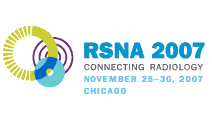
Abstract Archives of the RSNA, 2007
LL-BR2128-H09
Comparison of Radiation Dose and Detected Microcalcifications in Screen Film Mammography and Full Field Digital Mammography
Scientific Posters
Presented on November 27, 2007
Presented as part of LL-BR-H: Breast Imaging
Thomas Diebold MD, Presenter: Nothing to Disclose
David Nadas, Abstract Co-Author: Nothing to Disclose
Christine Solbach MD, Abstract Co-Author: Nothing to Disclose
Volkmar Jacobi MD, Abstract Co-Author: Nothing to Disclose
Manfred Kaufmann, Abstract Co-Author: Nothing to Disclose
Thomas Josef Vogl MD, Abstract Co-Author: Nothing to Disclose
This study compares the dose dependent detectability of microcalcifications in selen based full-field digital mammography (FFDM) to a conventional screen-film mammography system (SFM).
Specimen radiograms of 32 BIRADS IV/V lesions were obtained using SFM (Siemens Mammomat 3000 Nova) and FFDM (Siemens Mammomat Novation DR) both with automatic exposure. All radiograms were acquired with 23 kV tube voltage. Both, molybdenum/molybdenum (Mo/Mo) and tungsten/rhodium (W/Rh) anode/ filter combinations were used. Additionally, in FFDM doses were changed in manual mode to 200%, 50% and 25% compared to the automatically selected dose. The detectability of microcalcifications was evaluated and overall image quality of the digital radiograms compared to the conventional ones was assessed using a five-point-scale.
Up to a dose reduction of 50% FFDM showed a significantly better detectability of microcalcifications than SFM (p<0.0001). The overall image quality of the digital system was superior compared to SFM up to a dose reduction of 50% when using Mo/Mo as anode/filter combination. When using W/Rh the overall image quality of the digital radiograms was found to be equal to SFM at 50%/100%/200% of the automatic chosen dose. In all radiograms a dose reduction to 25% of the automatic chosen dose resulted in a significantly worse detectability of microcalcifications and overall image quality of FFDM compared to SFM.
In FFDM dose reductions of up to 50% may be achieved without compromising the detectability of microcalcifications/overall image quality compared to SFM.
The potential of dose reduction in FFDM is well known and there are studies which show better performances of FFDM even when dose is halfened. In an next step the clinical impact has to be checked.
Diebold, T,
Nadas, D,
Solbach, C,
Jacobi, V,
Kaufmann, M,
Vogl, T,
Comparison of Radiation Dose and Detected Microcalcifications in Screen Film Mammography and Full Field Digital Mammography. Radiological Society of North America 2007 Scientific Assembly and Annual Meeting, November 25 - November 30, 2007 ,Chicago IL.
http://archive.rsna.org/2007/5016804.html

